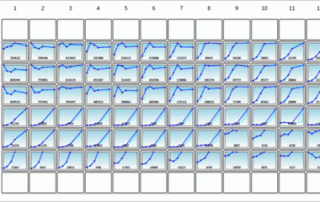Comparison of Trypan Blue and Fluorescence-Based Viability Detection Methods Via Morphological Observation
It's White Paper Wednesday! Read our featured white paper: Comparison of Trypan Blue and Fluorescence-Based Viability Detection Methods Via Morphological Observation Determining cell viability is a vital component in many biological experiments that range from standard cell culture to the investigation of pharmacological agents on tumor cells. One of the earliest and most common methods for measuring cell viability is the trypan blue (TB) exclusion assay [1, 2]. Over the last two decades, there have been various publications on comparing TB exclusion and fluorescence-based cellular viability assays [1, 3-5]. Previous results have shown that in a time-course measurement, TB exclusion [...]

